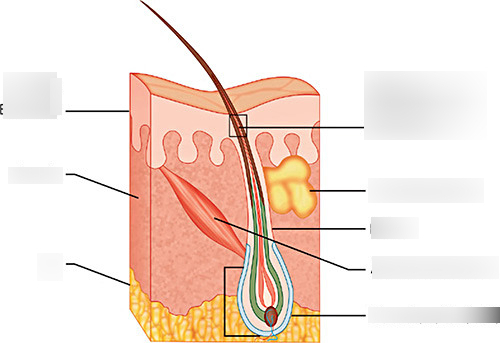Basic Cosmetology
Introduction to Cosmetology
Skincare Basics
Anatomy of Hair and Scalp
Introduction
Understanding the anatomy of hair and scalp is essential for cosmetologists to provide professional hair care treatments. Hair health depends on the condition of the scalp, hair follicles, and overall hair structure.

Structure of Hair
Hair consists of two main parts:
- Hair Shaft: The visible part, made up of the cuticle, cortex, and medulla.
- Hair Root: Located below the scalp, containing the hair follicle where growth begins.
The Scalp and Its Role
The scalp nourishes the hair and contains:
- Hair Follicles: Tiny sacs where hair grows.
- Sebaceous Glands: Produce sebum (oil) to moisturize hair.
- Blood Vessels: Supply nutrients to the hair roots.
Hair Growth Cycle
- Anagen Phase: Active growth lasting 2-6 years.
- Catagen Phase: Transition phase lasting 2-3 weeks.
- Telogen Phase: Resting phase when hair falls out.
Factors Affecting Hair and Scalp Health
- Nutrition: Vitamins and proteins are essential.
- Hormones: Hormonal changes affect hair growth.
- Products and Treatments: Harsh chemicals can damage hair.
Common Hair and Scalp Issues
- Dandruff
- Hair Loss
- Dry or Oily Scalp
- Split Ends
Tips for Healthy Hair and Scalp
- Wash hair regularly with a suitable shampoo.
- Massage the scalp to improve blood circulation.
- Use conditioner to prevent dryness and split ends.
- Avoid excessive heat styling.
Summary
Hair health relies on a healthy scalp, proper care, and nutrition. Cosmetologists play a key role in analyzing and improving hair and scalp conditions.